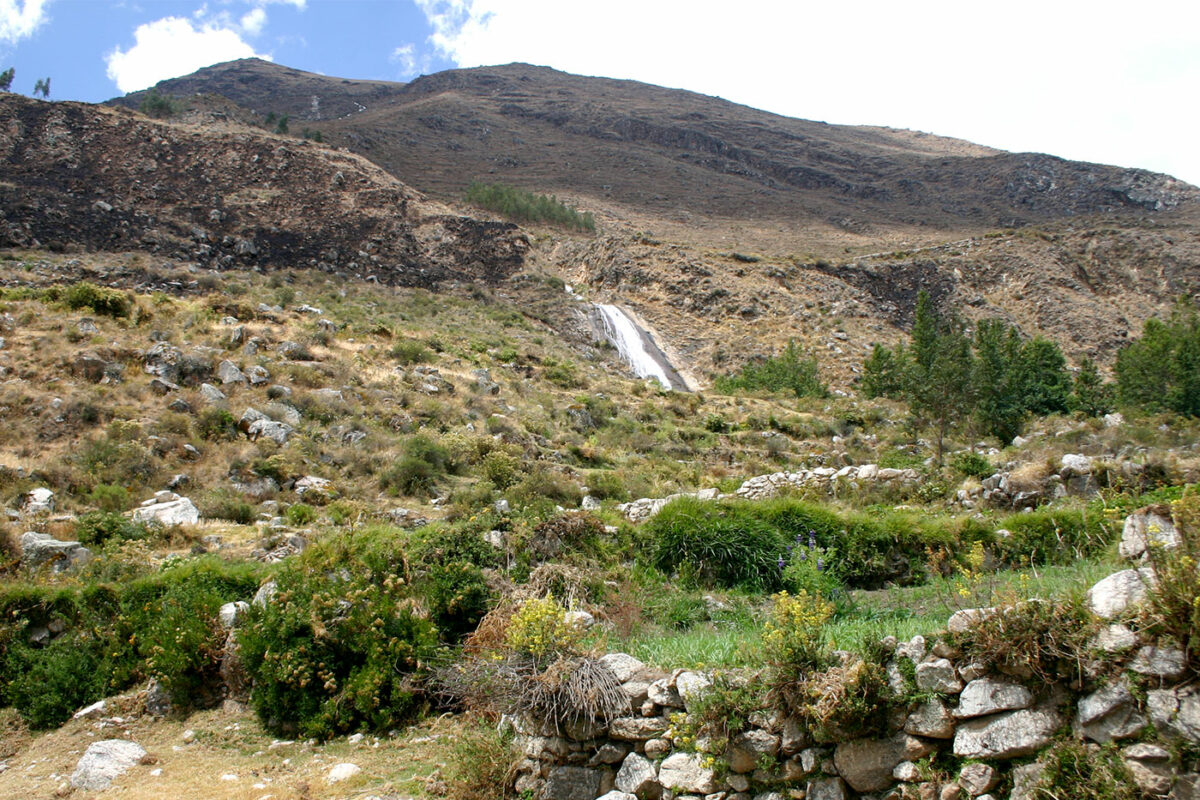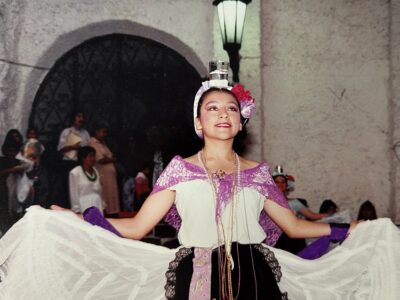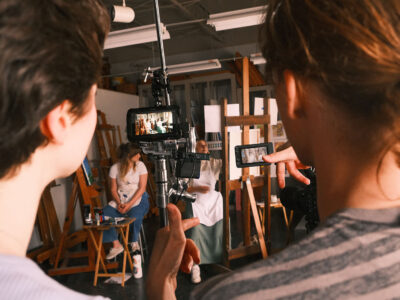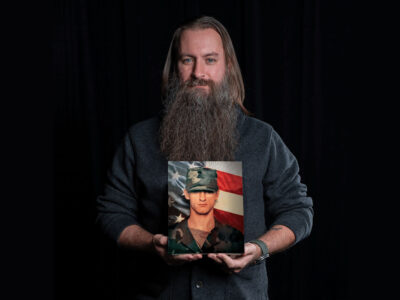Stories are the thread that connects us to the past, to our place and to each other. Each family, community and culture has its own way of weaving stories to make meaning of our lives and to pass those on through the generations. Some gather around campfires and barbecue pits. Others share their histories while breaking bread at the dinner table.
The stories from Hualcayán, an ancient and contemporary village in the high Andes of Peru, have a history dating back more than 4,500 years. Yet, with the rise and fall of numerous civilizations followed by centuries of Spanish colonialism, many of those stories have been lost. Only now are they being reimagined through a partnership between the farmers who today reside in that remote mountainside village and the archaeologists working alongside them.
Facilitated by Rebecca Bria, archaeologist and assistant professor of anthropology in the UTSA College of Liberal and Fine Arts, the people of Hualcayán will be storytellers for a virtual reality journey through the rich history of their unique farming village.
Bria’s archaeological research in Hualcayán is uncovering life in an agrarian community dating back thousands of years. It includes remnants of temples, tombs and homes surrounded by more than 1,000 acres of stone terraces and irrigation canals. After the Spanish conquest in the 1500s, the people from this village and across what is now Peru were brought into colonial cities where they were forced to do away with their ancestral practices as they became Christians.
“People were taken away from their community structure and the stories of their lives. When you fast-forward to the 1900s, agrarian reform returned the land to the people, but knowledge about the pre-colonial era was broken and fragmented,” Bria says. “Archaeology can bring in those narratives of what these places were and why we should care about them.”
This particular site is a treasure trove of archaeological finds. Bria and local archaeologists are uncovering ancient buildings in agricultural fields that connect ritual practices to farming. Here they are finding evidence of feasting where people consumed fermented corn beer from vessels crafted in the likeness of their ancestors. These discoveries are all fragments of a way of life yet to be pieced together and made into a full story of the people from this place.
The village of Hualcayán was reinhabited only 30 years ago with families who have no known connection to the ancient site. To make farming viable again, they restored the canal system that dates back to at least 100 A.D. in order to divert water from the nearby mountaintop to their crops. Agriculture is alive again in the village but without many of the stories of Hualcayán’s ancestral past.
To bring these stories to life, Bria and her Peruvian colleagues have taken steps over the past 14 years to establish a trusting and mutually beneficial relationship with the people of Hualcayán. She has sponsored numerous heritage events in the community and has spent time with them to understand what matters to them most and what these ancient findings could contribute to their lives.
As Bria and her collaborators work with the community to recreate the historical narrative from their archaeological discoveries, they are finding that the children in the village are especially receptive. At the suggestion of the schoolteachers, they set up a competition where the children told stories and drew pictures depicting how they imagined their village in ancient times, answering questions such as: What might Hualcayán have looked like 2,000 years ago? Who were these ancient people? How did they farm? What do these ceramic vessels tell us about their lives?
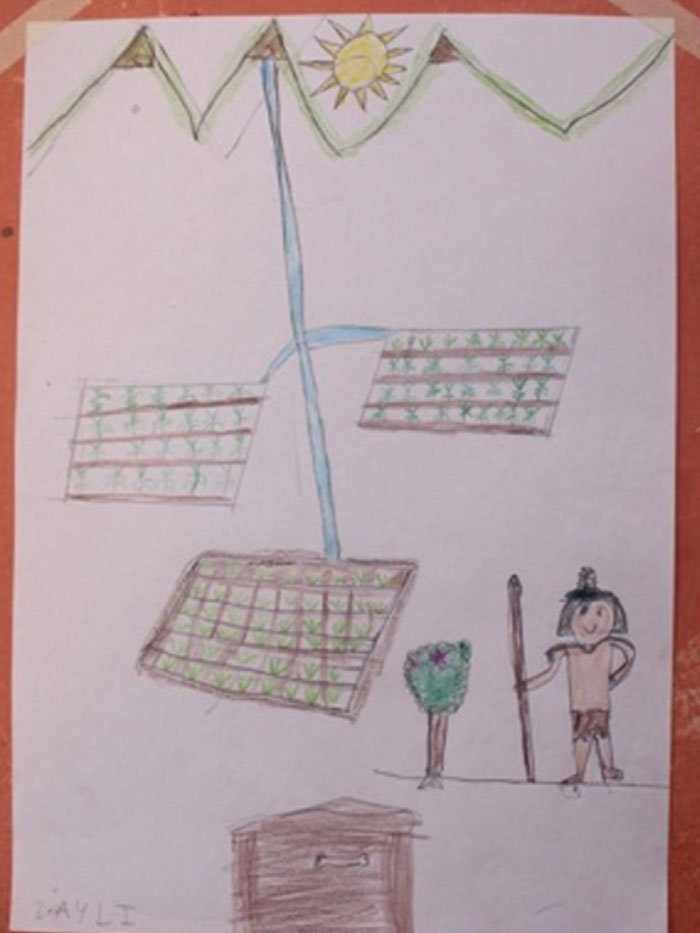
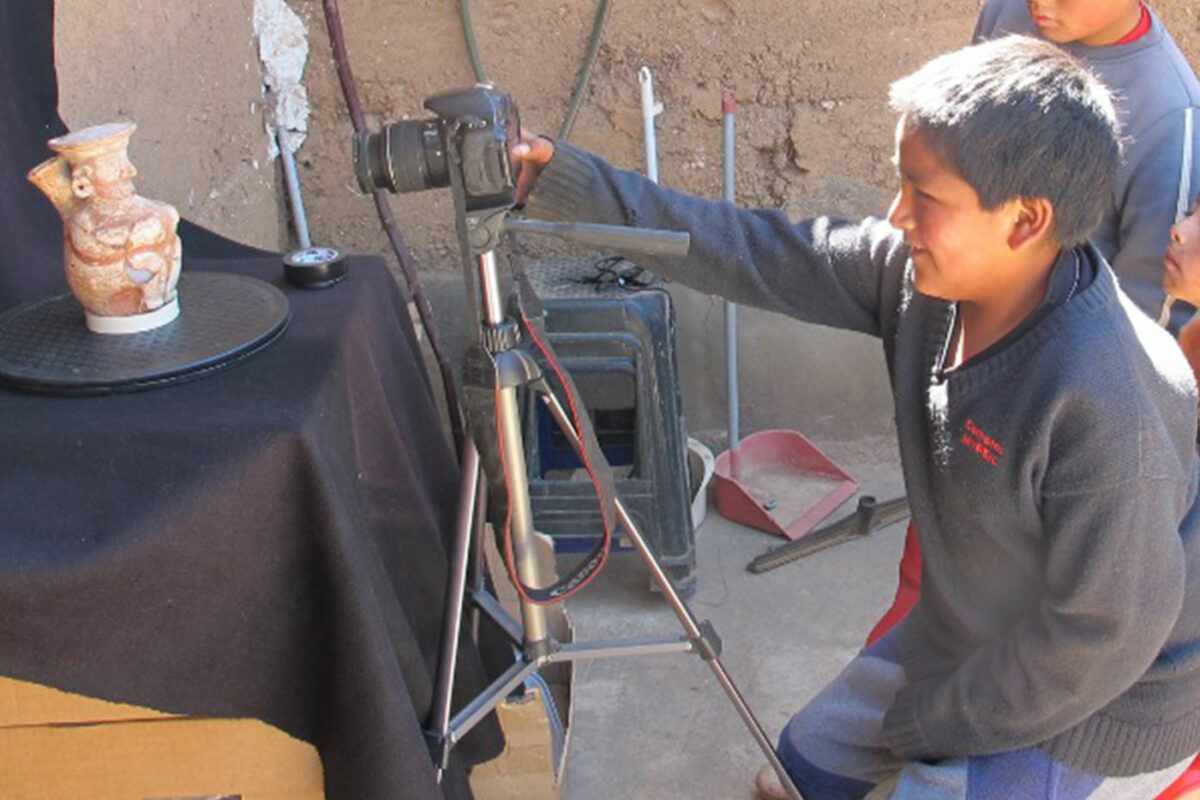
With stories of the place emerging from the community, now Bria is collaborating with UTSA alumnus Bruce Carlisle ’17, M.S. ’22 on using virtual reality technology to bring to life the deep and rich history of Hualcayán. Having honed his tech skills first as a parachute infantryman in the U.S. military and then at UTSA, Carlisle has been key to developing a VR game that will immerse players in different eras of the place.
Bria and Carlisle decided to create a prototype of a virtual reality video game using a combination of 3-D scans of archaeological findings, 3-D recreations of ancient structures, and the community’s stories. The prototype was created during a research trip to Hualcayán in 2022, where they received community feedback during and after its creation.
“The purpose behind the VR experience is to put people in scenarios where they feel rooted to the place and invested in its people,” Bria says. “It allows them to travel through layers of time and empathize, connect and fill in the stories of the experiences of people’s lives throughout Hualcayán’s long history.”
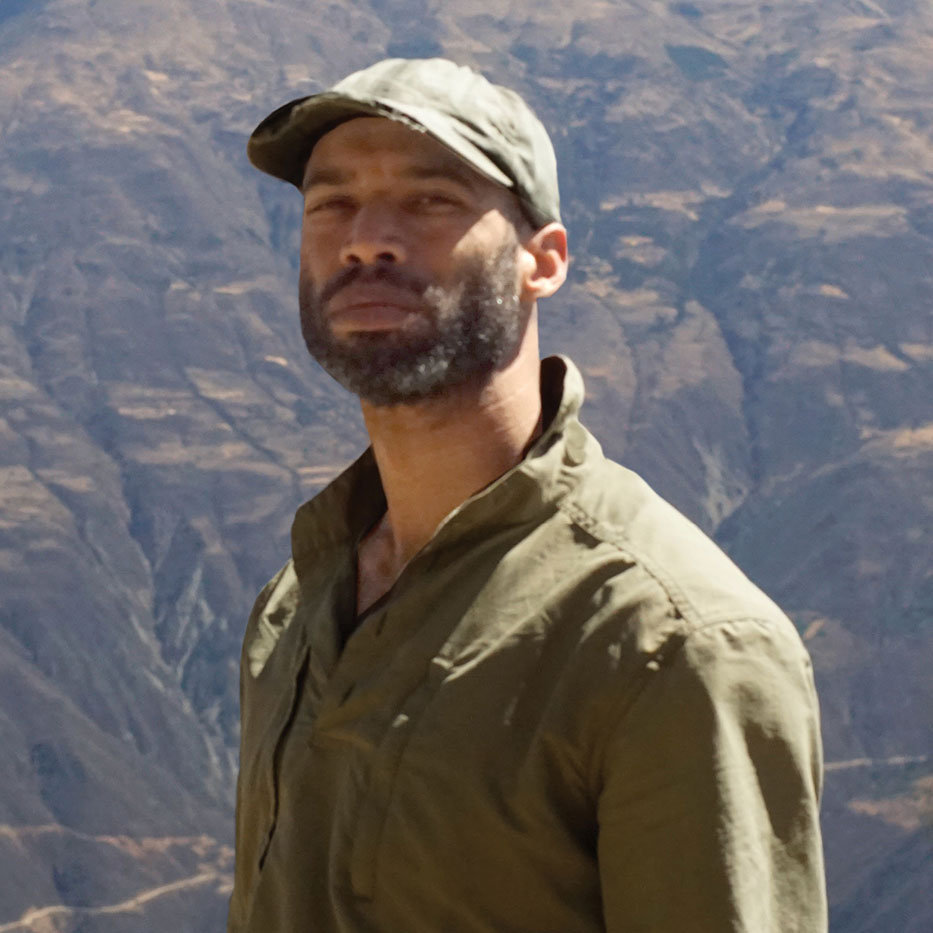
When people think of ancient Peru, the Inca usually come to mind. But in actuality, many different societies came and went over time in Peru.
“Even in a single place like Hualcayán, you’re looking at many different societies with cultural trends that would come and go,” Bria says. “Over the span of 4,000 years, Andean people converted to numerous religions, were incorporated into different empires, and repeatedly built new societies in the wake of political collapse. We can see that through the archeological record, but it’s really difficult to convey such a complex history of social transformation to people. So we wanted to build a VR game with a storyline that reveals the richness of the past in seven levels, each representing a culture and period in Hualcayán’s history.”
The game will show many dimensions of community life that were important to ancient Hualcainos—farming, burial of the dead, rituals and domestic life. Each period will have different scenarios that will lead players through these different experiences while also helping them understand how each particular period is very different from what came before or after. Moreover, members of the Hualcayán community are shaping the game’s narrative storyline and providing feedback at every step, with the goal of meaningfully incorporating their voices into the game and giving true ownership over this and any product that is based on their heritage.
Creating stories from these archaeological remains with deep antiquity opens up a conversation about the possibilities of what this place can do for people living in Hualcayán today. How might their lives be enriched by knowing that people have been innovating farming practices here for thousands of years? How might that change the ways they find meaning in the place they call home or make decisions about their future there?
As the Hualcayán community tested the VR game prototype, which reconstructs ancient buildings on the community landscape they know well, the one thing that became clear was that they knew exactly where they were on the land, but were experiencing it in a whole new way. Instead of seeing ruins, they were seeing complete structures and the activities and experiences that took place there.
“They were really receptive, and it reassured us that we were creating something meaningful,” she says.
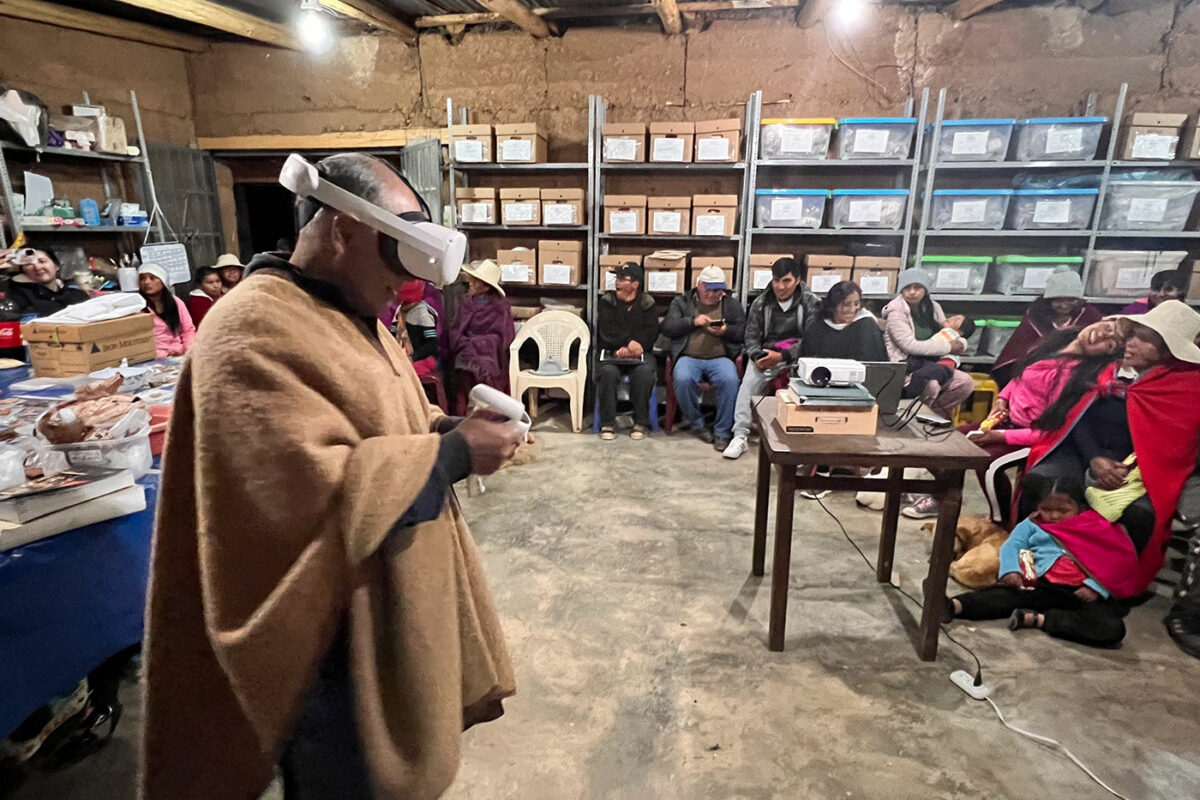
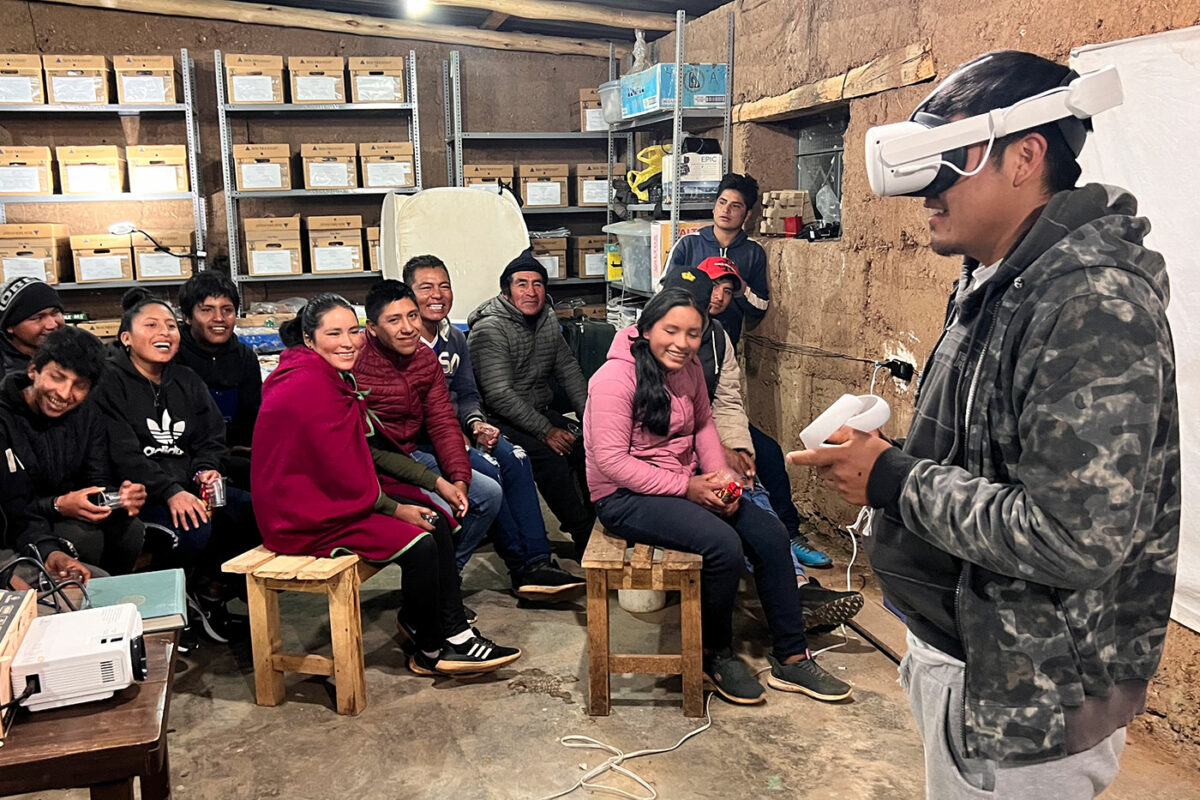
Because Hualcayán is situated at the trailhead of a popular trek in the Peruvian Cordillera Blanca mountains, the community envisions a visitor’s center where this VR experience can be shared with tourists. Moreover, proceeds from selling the game internationally could bring real economic gain for the community.
“The idea behind the project is as much about community development as it is about archaeology,” Bria says. “We are always keeping in mind the urgent questions of what are we doing here and why it matters to the people of this place.”
